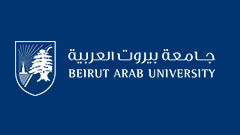Keywords
PIXE, pottery, cluster analysis, Tyre city, Gupix
Disciplines
Atomic, Molecular and Optical Physics | Physical Sciences and Mathematics | Physics
Abstract
Ion beam analysis techniques IBA, in particular proton induced X-ray emission PIXE, play an effective and efficient role in the characterization of cultural heritage objects. As early as the 1970s, PIXE technique was applied as reliable analytical technique to determine the elemental composition of archeological artefacts, where many accelerator laboratories worldwide are still involved in such applications. It has the advantage to be multi-elemental (Na to Pb) with major, minor and trace element analysis down to part per million or ppm, fast (few minutes per sample), non-destructive and its possible combination with other IBA techniques that can reveal other information. Thus, this can answer archaeological and conservation questions about provenance, authenticity, fabrication techniques and conservation issues. In this paper, it will be focused on the application of this analytical technique to study excavated ceramics from Tyre (Sour city), the prestigious city of antiquity. Several series of excavated pottery are analyzed in order to characterize the Tyre production, based on their elemental composition that is determined by PIXE technique. This can be used for the historical context in which they were produced and to compare with other objects excavated elsewhere as to determine possible ancient trade routes.
Author ORCID Identifier
Ahmad Reslan www.orcid.org/0009-0005-0707-5966
Mohamad Roumie www.orcid.org/0000-0002-3750-3555
Sandrine Elaigne www.orcid.org/0000-0002-7489-4428
Bilal Nsouli www.orcid.org/0000-0001-8613-6846
Mahmoud Korek www.orcid.org/0000-0001-9684-8433
Recommended Citation
Reslan, Ahmad; Roumie, Mohamad; Elaigne, Sandrine; Nsouli, Bilal; and Korek, Mahmoud
(2024)
"ACCELERATOR BASED TECHNIQUES IBA TO CHARACTERIZE ARCHEOLOGICAL ARTEFACTS: CASE STUDY OF ANCIENT CERAMICS,"
BAU Journal - Science and Technology: Vol. 5:
Iss.
2, Article 4.
DOI: https://doi.org/10.54729/2959-331X.1134
ISSN
2959-331X

